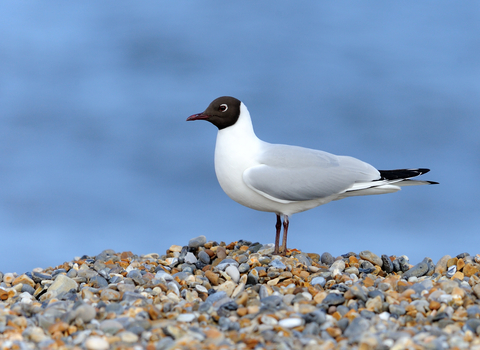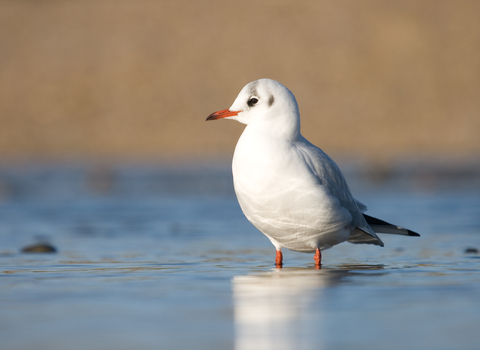
Black-headed gull (summer) ©Amy Lewis

Black-headed gull (winter) ©Tom Marshall
Black-headed gull
The black-headed gull is actually a chocolate-brown headed gull! And for much of the year, it's head even turns white. Look out for it in large, noisy flocks on a variety of habitats.
Enw gwyddonol
Chroicocephalus ridibundusPryd i'w gweld
January to DecemberGwybodaeth am rywogaethau
Categori
Ystadegau
Length: 35-38cmWingspan: 100-110cm
Weight: 200-400g
Average lifespan: 11-13 years but can live up to 30
Classified in the UK as Amber under the Birds of Conservation Concern 5: the Red List for Birds (2021).
